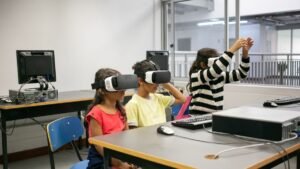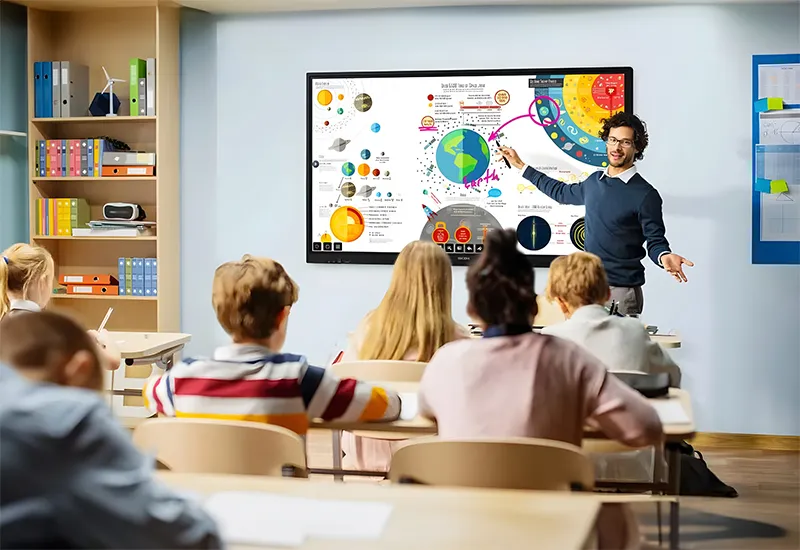What is Classroom 20X?
Classroom 20X represents a transformative approach to education that redefines the traditional learning environment. Originating from the need to adapt educational practices to the requirements of a rapidly changing world, Classroom 20X integrates modern technology with progressive teaching methodologies. This model enables educators to create dynamic learning experiences tailored to the diverse needs of students, fostering engagement and critical thinking skills.
At its core, Classroom 20X is built upon several guiding principles aimed at enhancing the educational experience. These principles emphasize collaboration, personalization, and the effective use of digital tools. Unlike traditional classrooms, where the instructor mainly directs the flow of information, Classroom 20X encourages a more student-centered approach. Here, learners take an active role in their education, participating in discussions, group projects, and hands-on activities that promote deeper understanding.
The integration of technology is a vital aspect of Classroom 20X, allowing access to vast resources and diverse learning materials. With digital platforms at their disposal, students can harness interactive tools that support a range of learning styles. Moreover, this innovative approach often incorporates elements such as gamification and virtual reality, enhancing the overall learning experience and making content more accessible and engaging.
Classroom 20X also transcends geographical boundaries, promoting global learning communities. This interconnectedness allows students to collaborate with peers worldwide, gaining insights into different cultures and perspectives. By leveraging technology, educators can provide a more enriched curriculum that prepares students for the challenges of the 21st century. In summary, Classroom 20X reimagines the traditional educational setting by fostering an engaging, interactive, and technology-enhanced environment that empowers both students and educators alike.
The Core Features of Classroom 20X
Classroom 20X represents a revolutionary shift in the educational landscape, characterized by its emphasis on personalized learning paths, collaborative learning environments, and the integration of advanced digital resources. These core features work synergistically to create an engaging and effective educational experience for students.
One of the most significant aspects of Classroom 20X is the personalized learning path. This approach acknowledges that each student possesses unique learning styles, strengths, and areas for improvement. Educators can leverage data analytics to assess individual student needs and tailor curricula accordingly. For example, in a Classroom 20X setting, a teacher might provide differentiated assignments that allow advanced learners to explore topics in more depth, while offering foundational support to those who need it. This targeted approach promotes student engagement and fosters a sense of ownership over one’s learning journey.
Another distinguishing feature of Classroom 20X is the collaborative learning environment it cultivates. By encouraging teamwork and peer interaction, this model transforms the traditional classroom into a dynamic space for knowledge sharing. Students can work together on projects, conduct peer reviews, and engage in discussions that promote critical thinking. Consider a scenario where students from different backgrounds collaborate on a community service project, using their diverse perspectives to devise innovative solutions. Such experiences not only enhance students’ social skills but also prepare them for future collaborative endeavors in the workforce.
Finally, Classroom 20X heavily relies on digital resources to enrich the learning experience. Access to vast online libraries, educational apps, and interactive platforms allows students to explore topics beyond the standard curriculum, stimulating curiosity and fostering independent research skills. For instance, integrating augmented reality tools can provide students with immersive experiences, such as virtual field trips or interactive simulations, making learning more impactful.
Through these features, Classroom 20X illustrates a forward-thinking approach to education, demonstrating how innovation can significantly enhance the teaching and learning process.

Benefits of Implementing Classroom 20X
Adopting Classroom 20X represents a significant shift in educational paradigms, offering numerous advantages for both students and educators. One of the most compelling benefits is the marked improvement in student engagement. Traditional instructional methods often struggle to captivate the diverse interests of learners, but Classroom 20X incorporates technology and interactive elements that resonate with today’s digital generation. Research indicates that when students are actively involved in their learning process, they are more likely to retain information and demonstrate greater enthusiasm for academic pursuits.
Furthermore, the Classroom 20X model fosters the development of critical thinking skills. This approach encourages students not only to absorb information but also to analyze, evaluate, and synthesize content. Through project-based learning and collaborative tasks, students engage in deep thinking and problem-solving, equipping them with skills that are essential in the 21st century. Studies show that educational environments that prioritize critical thinking positively influence academic outcomes, leading to better performance in assessments.
Additionally, Classroom 20X promotes enhanced collaboration among peers. As students work together on assignments and projects, they learn the invaluable skill of teamwork, which translates to improved social interactions and communication abilities. The collaborative nature of this approach nurtures a sense of community within the classroom, where students support one another and share diverse perspectives. Educational research highlights that classrooms emphasizing collaboration often lead to better interpersonal relationships and a more positive school culture overall.
Incorporating Classroom 20X not only enriches the learning experience for students but also empowers teachers by providing them with tools to innovate their instructional methods. With these advancements, institutions are positioned to witness positive transformation, making the investment in Classroom 20X both worthwhile and necessary for modern education.
Challenges and Considerations in the Transition to Classroom 20X
The transition to Classroom 20X represents a significant shift for educators and learning institutions, accompanied by a host of challenges that must be addressed for a successful implementation. One of the primary hurdles is resistance to change. Many educators may be accustomed to traditional teaching methodologies and could be hesitant to adopt new pedagogical approaches or technologies incorporated in the Classroom 20X model. This apprehension can stem from fear of inadequacy, skepticism about the effectiveness of new tools, or simply the comfort found in established routines.
Resource allocation also poses a critical challenge. Institutions must determine how to efficiently allocate funds towards new technologies, training, and classroom infrastructure necessary for Classroom 20X. Often, budget constraints can limit the extent to which these resources can be harnessed. Administrators must prioritize which elements of the transition will have the most significant impact on student learning and engagement, ensuring that financial investments align with educational goals.
Additionally, training requirements emerge as a crucial factor. Educators must feel confident in using new technologies and methods within Classroom 20X to facilitate enhanced learning experiences effectively. Professional development programs are essential to equip teachers with the skills needed for the new environment. Institutions should invest time in designing comprehensive training packages that provide ongoing support and learning opportunities.
To navigate these challenges effectively, strategic planning is vital. Institutions should adopt a phased approach when transitioning to Classroom 20X, allowing for gradual adaptation to new systems and practices. Engaging educators in the planning process can reduce resistance, as they will feel involved and valued in the decision-making journey. Furthermore, establishing partnerships with ed-tech providers for ongoing support and creating a community of practice among educators can foster collaboration and resource-sharing, ensuring a smoother transition into the Classroom 20X framework.



